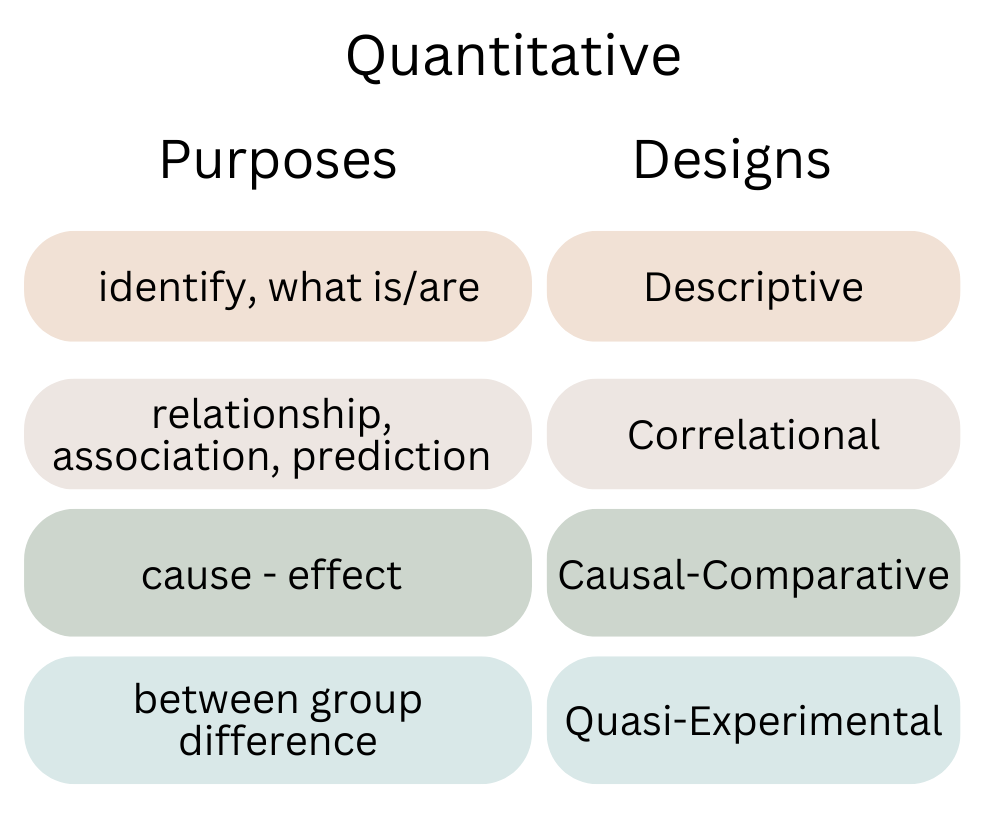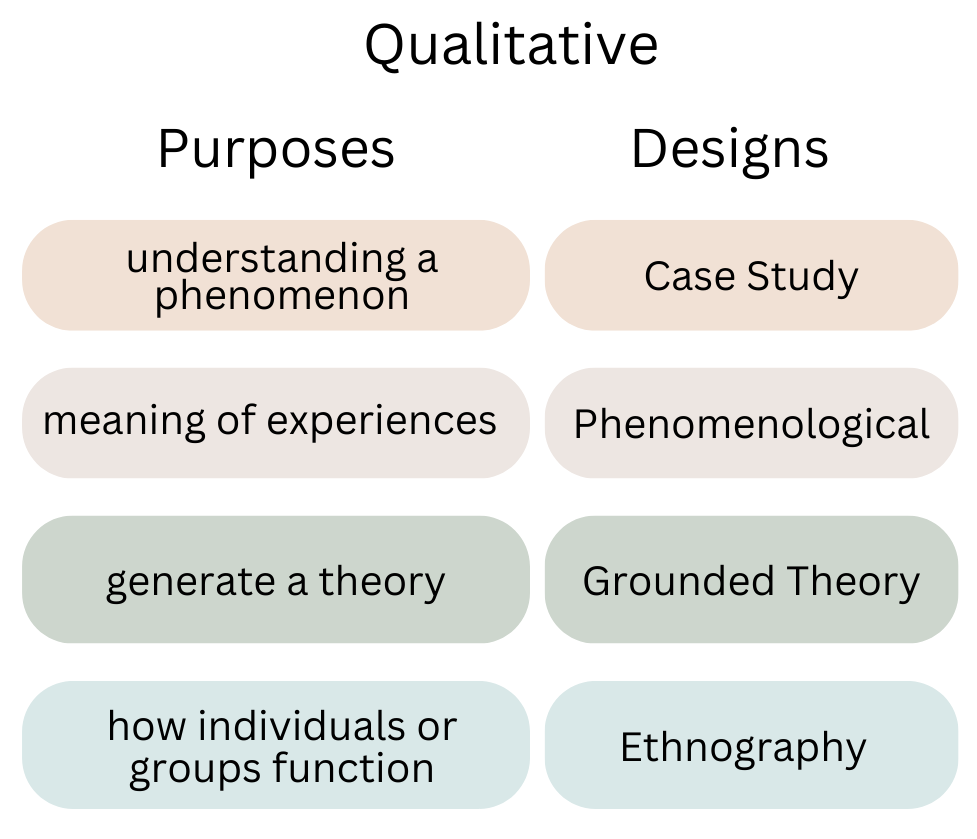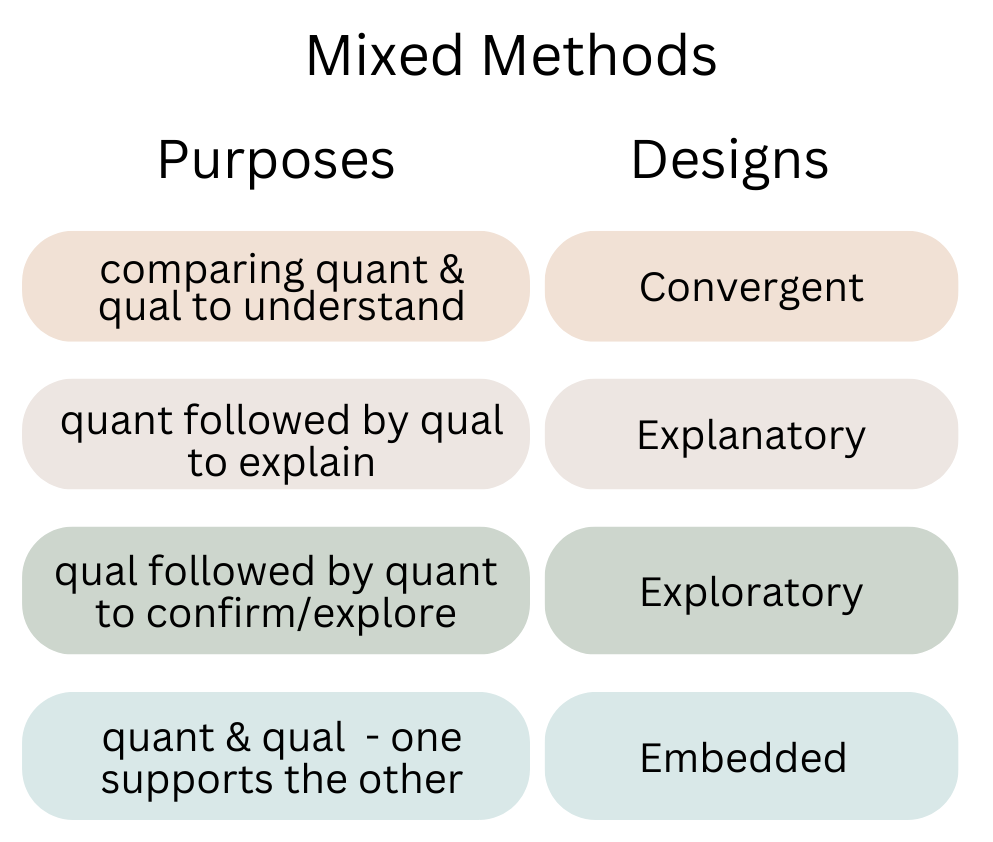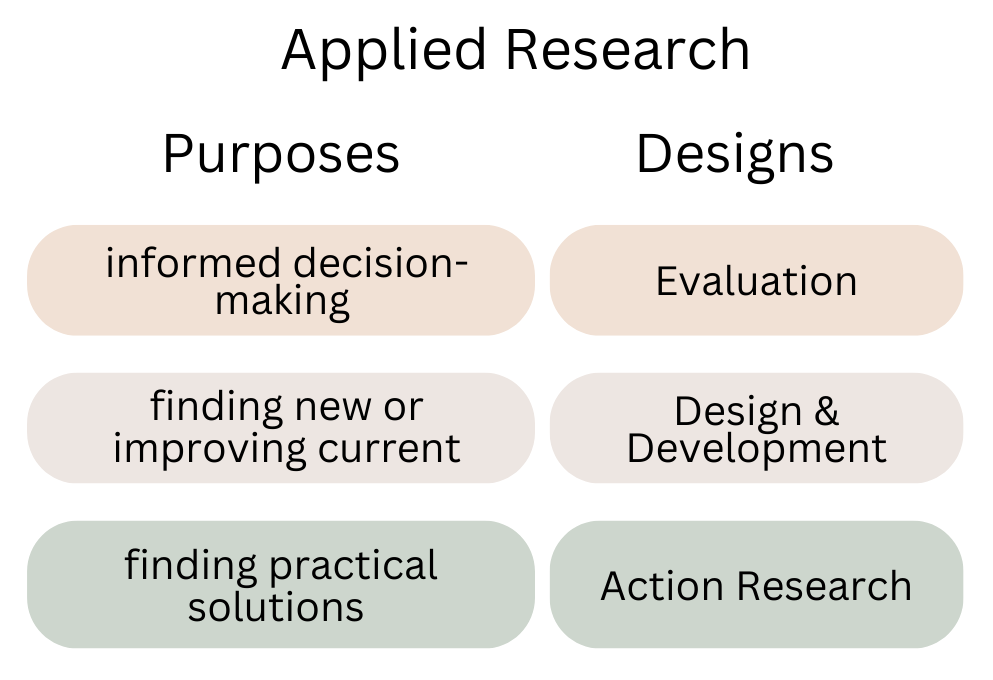Research Components
12 Research Design
The story continues…
The next morning, as Harry and Physicus finished the last cold slice of George’s pizza, they had also finished collecting their literature to conduct a review. The friends concluded their theory about the number of mice influencing Pickles’ behavior had considerable support in the research literature. After writing the Literature Review, their research questions will be fully grounded, justified, and worthwhile to be answered.
“So, how do we go about answering our research questions?” asked Harry.
Physicus explained that they will have to analyze their research questions to see what types of answers are required. Knowing this will guide their decisions about how to design the project to answer their questions.
“There are two basic types of answers to research questions, quantitative and qualitative. The types of answers the research questions require tell us what type of research design we need,” said Physicus.
“I guess if I ask how we decide which type of research design we should choose, you will say, ‘It depends?'” uttered Harry.
Physicus’ face brightened as he blurted out, “Absolutely not! Negative!” Physicus continued, “If the research questions are stated well, there will only be two ways in which they can be answered. The research questions are king; they make all the decisions.”
“How come?” Harry appeared confused.
“Well, let us see. Think about our first question. How many mice will Pickles attack at one time? What type of answer does this question require? It requires a numeric answer, correct?” Physicus asked.
“Yes, that is correct,” Harry said.
Physicus continued, “Good. So, does our second question also require a numeric answer?”
“The second question is also answered with a number,” replied Harry
Physicus blurted, “Correct! This means we need to use a quantitative research design!”
Physicus continued, “Now if we had research questions that could not be answered with numbers, we would need to use a qualitative research design to answer our questions with words or phrases instead.”
Harry now appeared relieved, “I get it. So in designing a research project, we simply look for a way to answer the research questions. That’s easy!”
“Well, it depends,” answered Physicus smiling.
Interpreting the Story
There are qualitative, quantitative, mixed methods, and applied research designs. Based on the research questions, the research design will be obvious. Physicus led Harry in determining their study would need a quantitative design, because they only needed numerical data to answer their research questions. If Harry’s questions could only be answered with words or phrases, then a qualitative design would be needed. If the friends had questions needing to be answered with numbers and phrases, then either a mixed methods or an applied research design would have been the choice.
Research Design
The Research Design explains what type of research is being conducted. The writing in this heading also explains why this type of research is needed to obtain the answers to the research or guiding questions for the project. The design provides a blueprint for the methodology. Articulating the nature of the research design is critical for explaining the Methodology (see the next chapter).
There are four categories of research designs used in educational research and a variety of specific research designs in each category. The first step in determining which category to use is to identify what type of data will answer the research questions. As in our story, Harry and Physicus had research questions that required quantitative answers, so the category of their research design is quantitative.
The next step in finding the specific research design is to consider the purpose (goal) of the research project. The research design must support the purpose. In our story, Harry and Physicus need a quantitative research design that supports their goal of determining the effect of the number of mice Pickles encounters at one time on his behavior. A causal-comparative or quasi-experimental research design is the best choice for the friends because these are specific quantitative designs used to find a cause-and-effect relationship.
Quantitative Research Designs
Quantitative research designs seek results based on statistical analyses of the collected numerical data. The primary quantitative designs used in educational research include descriptive, correlational, causal-comparative, and quasi-experimental designs. Numerical data are collected and analyzed using statistical calculations appropriate for the design. For example, analyses like mean, median, mode, range, etc. are used to describe or explain a phenomenon observed in a descriptive research design. A correlational research design uses statistics, such as correlation coefficient or regression analyses to explain how two phenomena are related. Causal-comparative and quasi-experimental designs use analyses needed to establish causal relationships, such as pre-post testing, or behavior change (like in our story).
The use of numerical data guides both the methodology and the analysis protocols. The design also guides and limits how the results are interpreted. Examples of quantitative data found in educational research include test scores, grade point averages, and dropout rates.

Qualitative Research Designs
Qualitative research designs involve obtaining verbal, perspective, and/or visual results using code-based analyses of collected data. Typical qualitative designs used in educational research include the case study, phenomenological, grounded theory, and ethnography. These designs involve exploring behaviors, perceptions/feelings, and social/cultural phenomena found in educational settings.
Qualitative designs result in a written description of the findings. Data collection strategies include observations, interviews, focus groups, surveys, and documentation reviews. The data are recorded as words, phrases, sentences, and paragraphs. Data are then grouped together to form themes. The process of grouping data to form themes is called coding. The labeled themes become the “code” used to interpret the data. The coding can be determined ahead of time before data are collected, or the coding emerges from the collected data. Data collection strategies often include media such as video and audio recordings. These recordings are transcribed into words to allow for the coding analysis.
The use of qualitative data guides both the methodology and the analysis protocols. The “squishy” nature of qualitative data (words vs. numbers) and the data coding analysis limits the interpretation and conclusions made from the results. It is important to explain the coding analysis used to provide clear reasoning for the themes and how these relate to the research questions.

Mixed Method Designs
Mixed Methods research designs are used when the research questions must be answered with results that are both quantitative and qualitative. These designs integrate the data results to arrive at conclusions. A mixed method design is used when there are greater benefits to using multiple data types, sources, and analyses. Examples of typical mixed methods design approaches in education include convergent, explanatory, exploratory, and embedded designs. Using mixed methods approaches in educational research allows the researcher to triangulate, complement, or expand understanding using multiple types of data.
The use of mixed methods data guides the methodology, analysis, and interpretation of the results. Using both qualitative (quant) and quantitative (qual) data analyses provides a clearer or more balanced picture of the results. Data are analyzed sequentially or concurrently depending on the design. While the quantitative and qualitative data are analyzed independently, the results are interpreted integratively. The findings are a synthesis of the quantitative and qualitative analyses.

Applied Research Designs
Applied research designs seek both quantitative and qualitative results to address issues of educational practice. Applied research designs include evaluation, design and development, and action research. The purposes of applied research are to identify best practices, to innovate or improve current practices or policies, to test pedagogy, and to evaluate effectiveness. The results of applied research designs provide practical solutions to problems in educational practice.
Applied designs use both theoretical and empirical data. Theoretical data are collected from published theories or other research. Empirical data are obtained by conducting a needs assessment or other data collection methods. Data analyses include both quantitative and qualitative procedures. The findings are interpreted integratively as in mixed methods approaches, and then “applied” to the problem to form a solution.

Telling the research story
The Research Design in a research project tells the story of what direction the plot of the story will take. The writing in this heading sets the stage for the rising action of the plot in the research story. The Research Design describes the journey that is about to take place. It functions to guide the reader in understanding the type of path the story will follow. The Research Design is the overall direction of the research story and is determined before deciding on the specific steps to take in obtaining and analyzing the data.
The Research Design heading appears in Chapter 3 of the thesis and dissertation projects under the Methodology heading. A literature review project does not have this heading.


